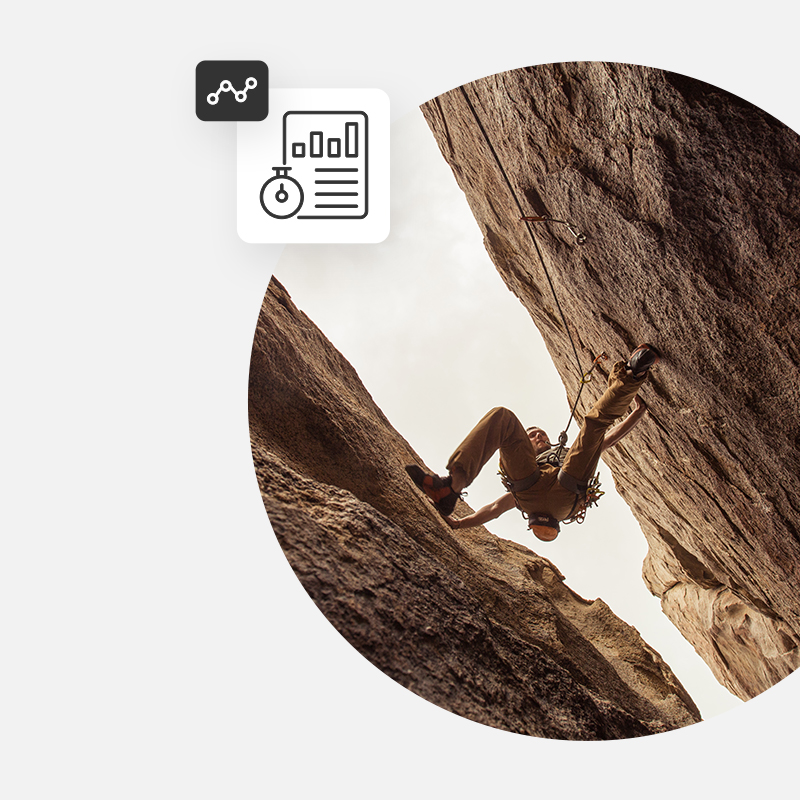Performance management has always been a top priority for any organization looking to improve their ROI, revenue, and employee retention. With COVID-19 creating disruptions in normal operations for most companies, leaders have had to quickly rethink and rebuild their models of performance for a remote workforce. Now, as in-person work environments are becoming safer, we’re again in a phase of transition and learning — this time from remote to a hybrid workplace.
With 44% of US employees preferring to work from home, HR leaders and executives are creating new guidelines and policies to support a work environment that combines in-person and work from home experiences. Once again, the question arises of how best to support and evaluate teams and individuals.
Should organizations scrap their current process in this new hybrid environment? Should they look to their pre-pandemic structure for guidance? What can be done to ensure performance management is sustainable, agile, and, most importantly — effective?
Goal-setting is more important than ever before
One of the most effective and agile ways to measure performance is through dynamic, cadenced goal-setting. Unlike traditional performance management where goals are set and revisited once (maybe twice) a year, an effective and timely approach to goal-setting means clear, agile, team-oriented goals that drive actions and align individuals to the mission and purpose of an organization.
In today’s hybrid environment, frequent communication and company wide alignment is not a nice-to-have — it’s imperative to the success of managers, teams, and individual contributors. The old, rigid way of locking in goals and not revisiting them for a year won’t work. Top-tier priorities change at a faster pace and employees need to not only adjust their work accordingly, but know and understand that these pivots have meaning and are recognized by leadership accordingly.
The most effective goals reflect the work to be done, align teams around that work, and create transparency. A highly effective goal-setting methodology that works for companies of all sizes and is designed to scale is the OKR (objectives and key results) framework. In this framework, goals are set based on common factors and empower individuals to perform.
Creating a shared mission and purpose that supports performance
Measuring performance begins with a well-defined company mission and purpose. This is true for any work environment, but is particularly vital for remote and hybrid workplaces. Why? Because the practice of sharing a mission and purpose directly relates to business and people outcomes. Employees need to know why their work matters. Connecting individuals and teams to a mission means alignment and cohesion, regardless of physical location.
Leaders might say that creating a shared mission and purpose is obvious, but individual contributors who are focused on their work and adjusting to new team dynamics in a hybrid environment aren’t (and shouldn’t be) responsible for keeping that mission and message top-of-mind. It’s the role of leadership to communicate regularly the significance of mission and purpose and make it clear and easy for everyone to understand.
Focusing on goals will help you measure performance
Effective goals follow the same criteria: they need to have an outcome (the objective), that is measurable (what is the result), and action-oriented (as in the initiatives needed to accomplish the result).
By utilizing the same, basic structure, leaders can ensure that teams and individuals in a hybrid workplace are prioritizing their work based on a shared vision while also setting tangible, bespoke goals that speak directly to their work. Focusing on goals and outcomes means companies can stay on track while supporting their employees and maintaining a collective balance that applies to remote and in-person work.
Goals should be transparent
The success of a hybrid work environment is predicated on communication and transparency. We can no longer rely on in-person interactions for important messages, pulse checks, and accountability. Having clarity on what every person and team is working on promotes teamwork, alignment, and understanding — all of which creates trust. Goal transparency, in other words, replaces traditional in-person oversight with a collaboration framework that works in a hybrid environment and scales far more easily and equitably than static managerial models. It provides a path for employees to see how their performance is being measured.
Hybrid workplace performance measurement needs technology
The only way to be truly transparent with goal-setting in a remote or hybrid workplace is by utilizing technology that acts as the center of truth. Dynamic goals need to be accessible. Employees, managers, and leaders need to be able to revisit, revise, and review their priorities. Betterworks’ platform enables goal transparency in this way. Every employee in an organization can view their own goals as well as anyone else’s. This transparency through technology is used to support collaboration among groups or teams, allowing for shared understanding and knowledge on how to better support each other.
In addition to transparency, leveraging technology for performance measurement and goal-setting drives autonomy and engagement. A single-source platform provides a unified framework everyone in an organization will use, leaving the actual drafting and choosing of goals up to teams and individuals. When employees decide on their goals using OKRs, they’re also deciding on how they’re going to accomplish them. And when employees can transparently see their manager’s goals (or even the goals of c-suite executives), they understand how their work connects to the larger strategy.
New workplace models require tools
Performance management tools that accurately measure performance with equity and fairness are embedded in the flow of work. They are integrated with the everyday tools employees use and feel meaningful. The Betterworks platform supports performance enablement by making it easy to set meaningful goals, calibrate them, and update progress automatically. This seamless communication, transparent source of truth, and company-wide framework is imperative when operating a hybrid workplace.
When it comes to measuring performance with employees who are both in-person and at home, setting clear goals aligned with a clear purpose and mission, supporting teams to work together, and empowering autonomy of employees can’t be overstated. By utilizing a simple and unified framework to align everyone, employees feel empowered to do their best work, regardless of where they do it. Technology that makes work easier – not harder – and supports clarity, alignment and collaboration is key.
Performance management can get tricky in hybrid work environments, learn more about how to plan for your hybrid environment in our latest guide.






